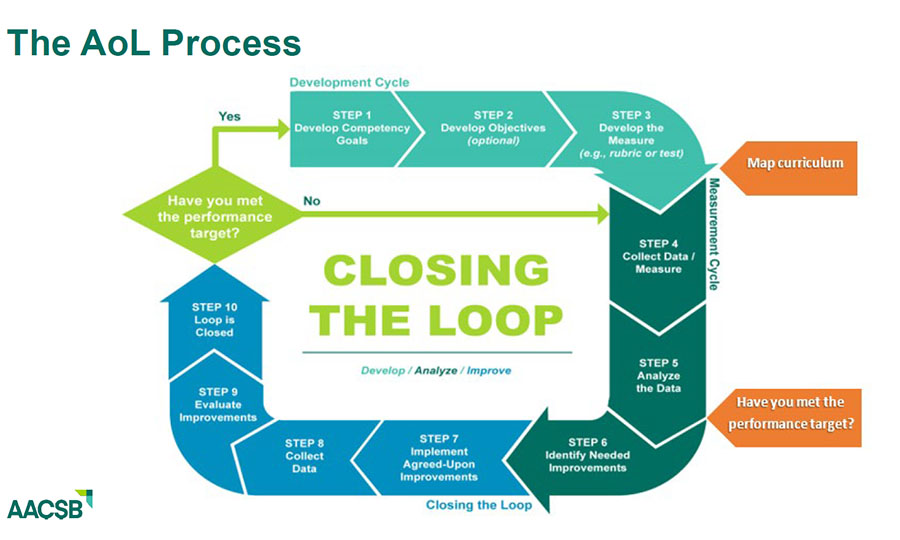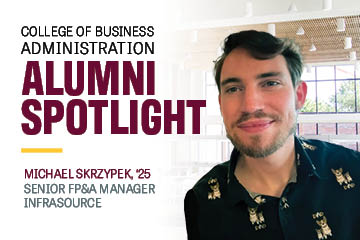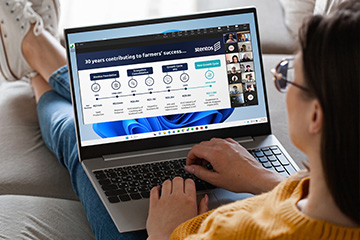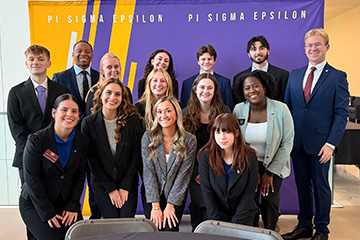Continuous improvement in action with Tamara Merseli
How assurance of learning helps CMU’s College of Business measure and strengthen student success
At Central Michigan University’s College of Business Administration, growth isn’t left to chance. Each semester, faculty and staff work behind the scenes to ensure students are mastering the skills and knowledge they need to thrive in today’s business world. That ongoing process, known as assurance of learning, reflects and drives the CBA’s mission to prepare graduates for meaningful, market-ready careers.
“Assurance of Learning is an important process that helps us make sure students are learning the knowledge and skills they will need to succeed in their chosen field,” said Tamara Merseli, director of assessment and accreditation. Both the College of Business Administration and each academic program within it have their own learning goals. These goals are aligned with professional and industry expectations. Assurance of Learning then allows the college to evaluate whether those goals are being achieved and to continuously improve how they are met.
From data to development
Assurance of learning is about more than accountability; it’s about continuous improvement. The process begins with identifying college-wide learning goals such as problem-solving, communication, and business knowledge. These goals are assessed throughout students’ four years in the program, often through integrated coursework and presentations.
For example, students in the CBA’s Integrated Core, a three-course sequence required for all business majors, complete a semester-long project and at the end of the semester, they have a major presentation that is evaluated using the CBA rubric for oral communication. “We collect that data and analyze how students perform in areas like presentation skills or problem-solving,” Merseli said. “Then we look at the trends. Are students improving year over year? Are there areas where we can challenge them more?”
The findings guide faculty discussions and curriculum updates. “If we notice students could improve in a specific skill such as problem solving, we might add more case studies or applied exercises in certain courses,” she said. “It’s all about helping students be even more prepared for their careers.”
Aligned with accreditation and innovation
Assurance of learning also connects directly to AACSB accreditation, an international standard of excellence in business education. “Accreditation emphasizes that we must measure what students are learning and use that information to continuously improve our programs,” Merseli said. “It’s a one-to-one alignment.”
But accreditation is not the only motivation. “Our goal is to make our programs stronger by aligning them with market needs, so our students graduate ready to succeed in their careers.” she said. “As new technologies like AI enter the business world, we’re asking how to integrate them into our curriculum and measure students’ proficiency.”
Everyone plays a role
Merseli said assurance of learning is truly a team effort. “Faculty plays a key role in reviewing results and leading improvements,” she said. “They don’t just bring the learning goals into their classrooms—they teach them, assess them, and make changes based on the results. Our office collaborates with them and provides support, but faculty ultimately drive the improvements within their programs.”
Even when data collection pauses, improvement continues. “If we collect data for one year, the next year becomes our improvement year,” she said. “We revise materials, add new examples, or enhance assignments to reinforce certain skills. Then we reassess again. It’s a continuous cycle of improvement.”
Student feedback is also part of that cycle. “We listen to what students share in exit surveys and through feedback to faculty,” Merseli said. “Their insights help us understand how changes are affecting their experience.”

Turning insights into impact
The assurance of learning process has already led to tangible updates. One major area under review is the comprehensive exam that assesses students’ core business knowledge. “Based on our data, we’re revising those questions to make them more current and challenging,” Merseli said.
These changes don’t just benefit faculty. They directly shape how students learn and grow. “Even if students aren’t aware of this process, they feel the results,” Merseli said. “Their courses are continuously updated, their assignments are more aligned with real-world challenges, and they’re graduating more ready for the workforce.”
A shared commitment to student success
Merseli said what keeps her motivated is watching the results come full circle. “It’s not just data. It’s stories of progress,” she said. “We use what we learn to make every class, every assignment, and every skill more meaningful for students.”
Assurance of learning represents a cycle of reflection and renewal that defines CMU’s approach to business education. Everyone plays a part, and every improvement helps prepare the next generation of business leaders.




